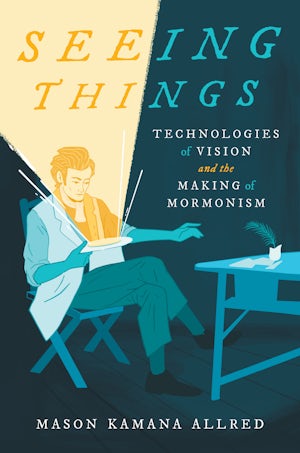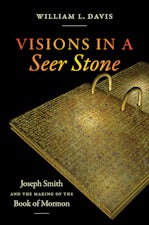Seeing Things
Technologies of Vision and the Making of Mormonism
By Mason Kamana Allred
266 pp., 6.125 x 9.25, 12 halftones, notes, bibl., index
-
Paperback ISBN: 978-1-4696-7258-8
Published: March 2023 -
Hardcover ISBN: 978-1-4696-7257-1
Published: March 2023 -
E-book EPUB ISBN: 978-1-4696-7259-5
Published: February 2023 -
E-book PDF ISBN: 979-8-8908-6186-3
Published: February 2023
Buy this Book
- Paperback $29.95
- Hardcover $99.00
- E-Book $22.99
For Professors:
Free E-Exam Copies
While Mormons’ uses of television and the internet are recent examples of the tradition’s use of visual technology, Allred excavates older practices and technologies for negotiating the spirit, such as panorama displays and magic lantern shows. Fusing media theory with feminist new materialism, he employs media archaeology to examine Mormons’ ways of performing distinctions, beholding as a way to engender radical visions, and standardizing vision to effect assimilation. Allred’s analysis reveals Mormonism as always materially mediated and argues that religious history is likewise inherently entangled with media.
About the Author
Mason Kamana Allred is assistant professor of communication, media, and culture at Brigham Young University-Hawaii.
For more information about Mason Kamana Allred, visit
the
Author
Page.
Reviews
"Allred articulates in this ambitious entry some fascinating connections between Latter-day Saint theology, technology, and identity formation . . . . Deeply conversant in critical theory, the author establishes inventive arguments supported by examples that convincingly show the range of media’s power to change culture. Scholars of religion or media will find much to consider."—Publishers Weekly
"American Mormonism is a religion of seers. What does it mean to see things? Mason Kamana Allred answers: it means to speculate by media, and the media of Mormonism help its practitioners to see at distances, over space and far back into time, beyond death into the everyday here and now. Seeing Things, with its lively pen and gift for bringing forth hidden treasures from the archives, serves both as the pioneering Mormon media history and as spectacles for seeing beyond."—John Durham Peters, Yale University
"Written with a sensitive eye to religious history, national politics, and the surprising liveliness of things and the dead, Allred offers a fascinating account of links between spirit and machine in Mormon history. The book deftly interweaves scholarship on lived religion, media theory, and new materialism. It will reward readers in media studies and religious studies, inviting them to reconsider the mysteries of technology and the technicity of vision, spiritual and otherwise."—Jenna Supp-Montgomerie, University of Iowa




